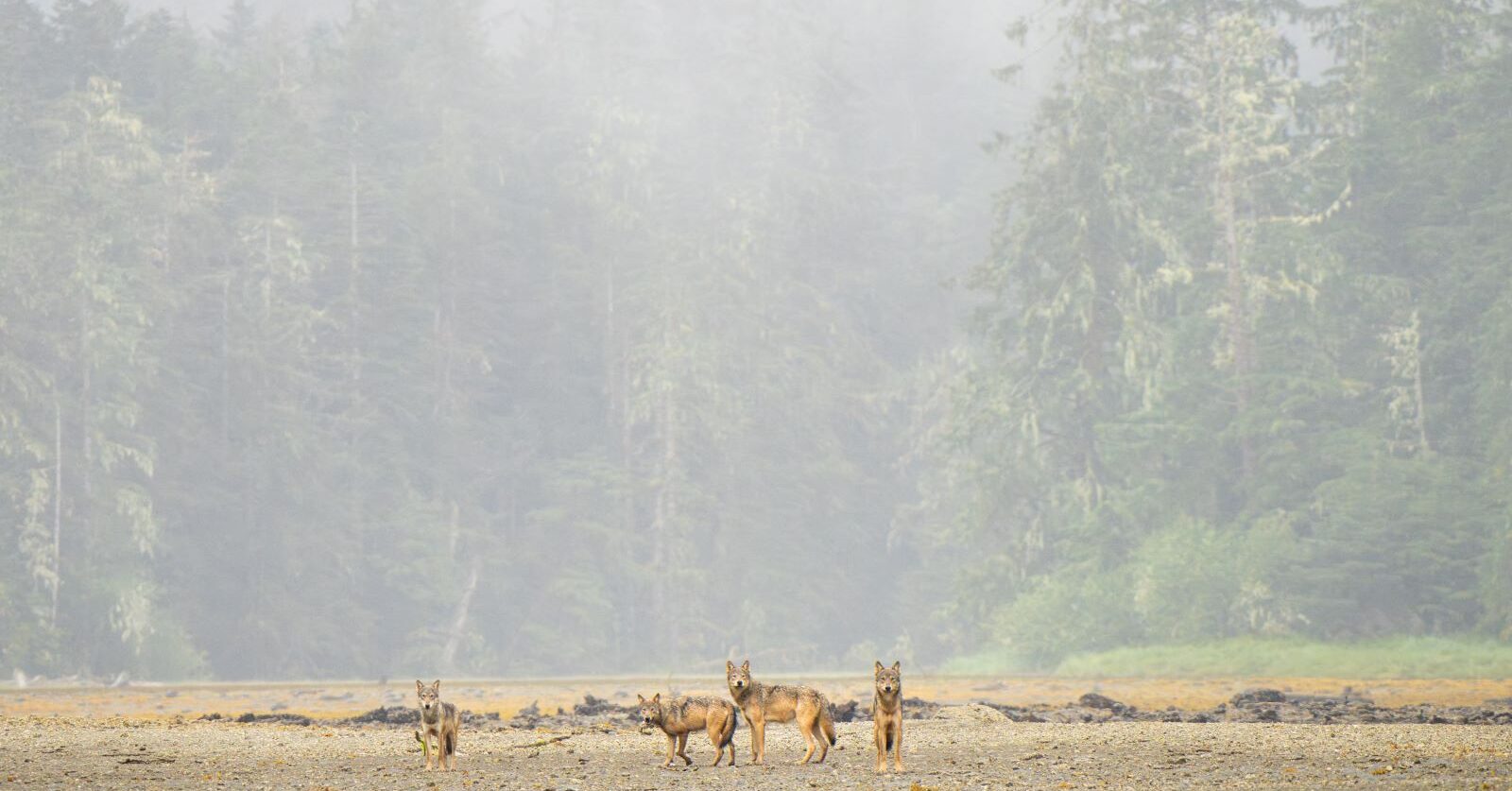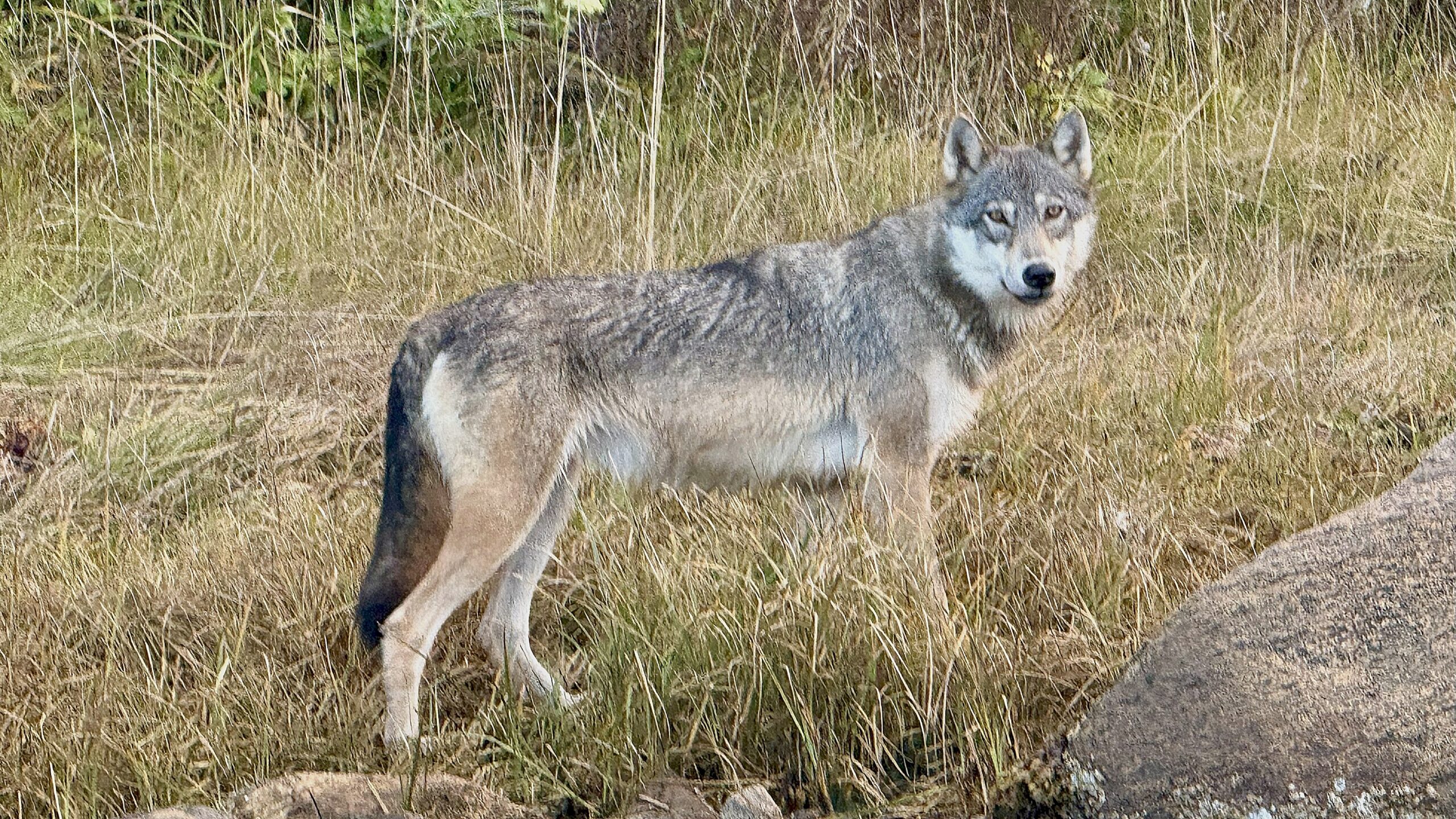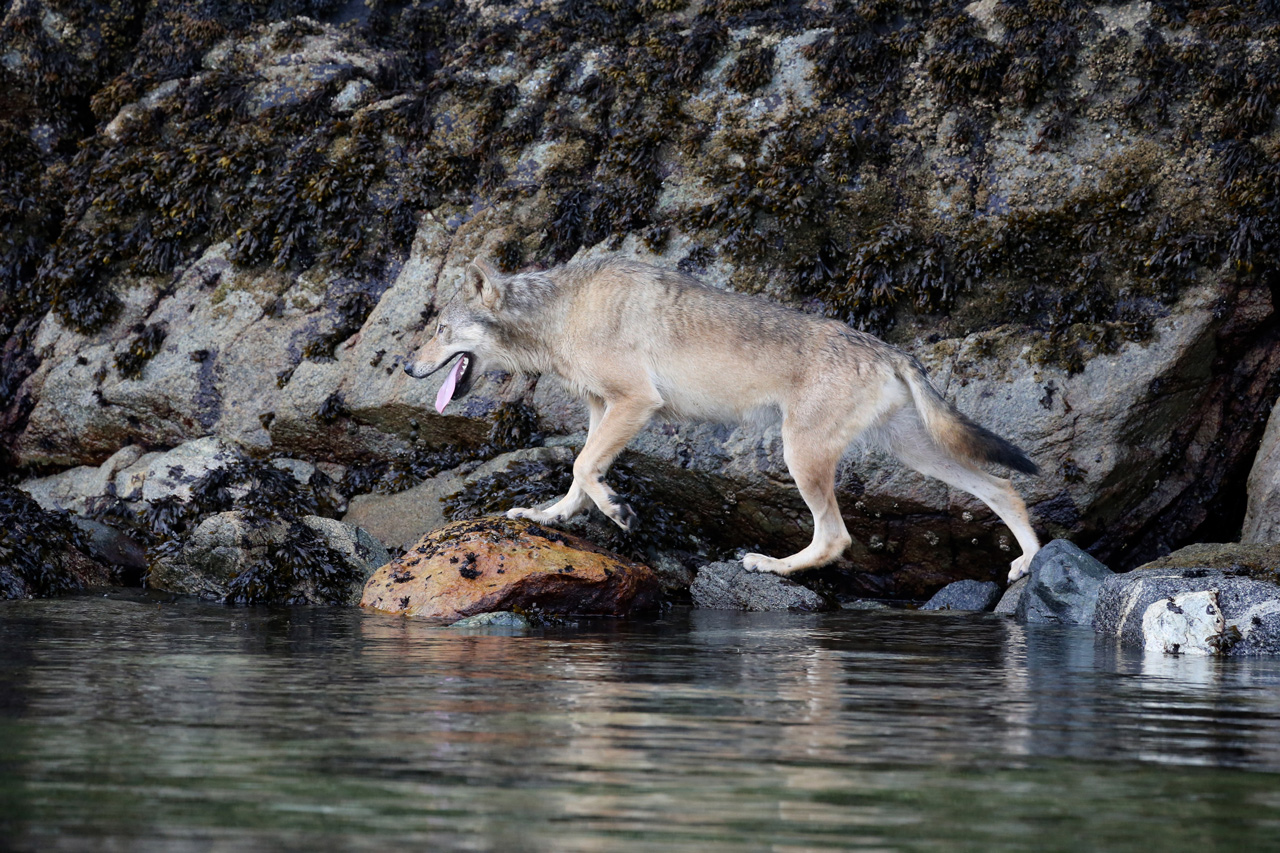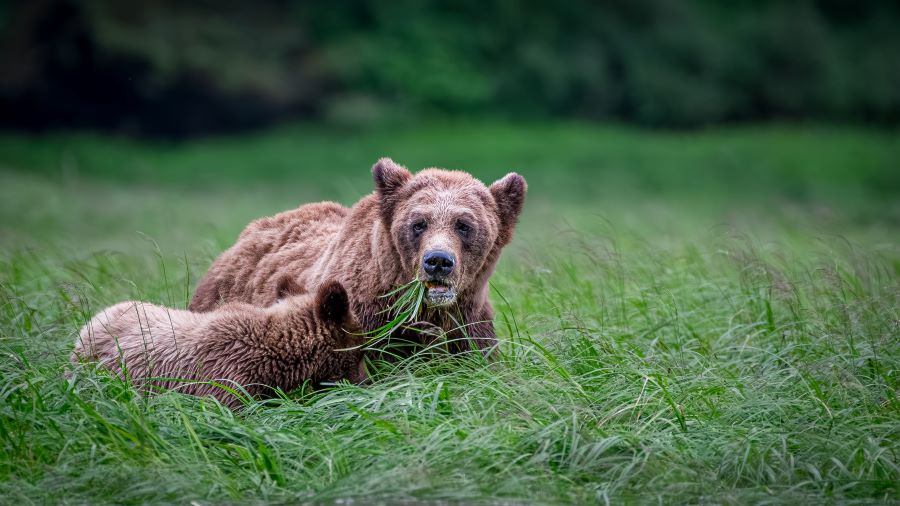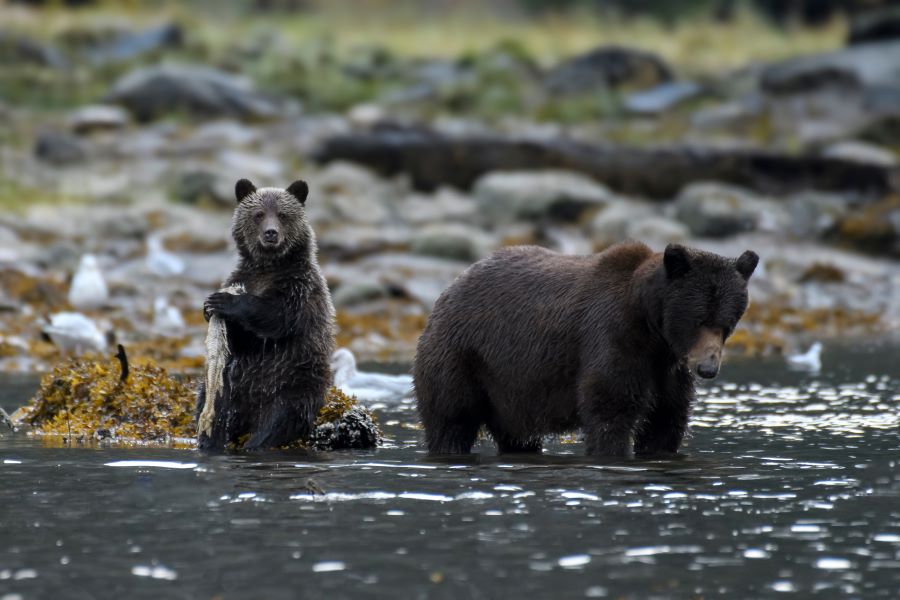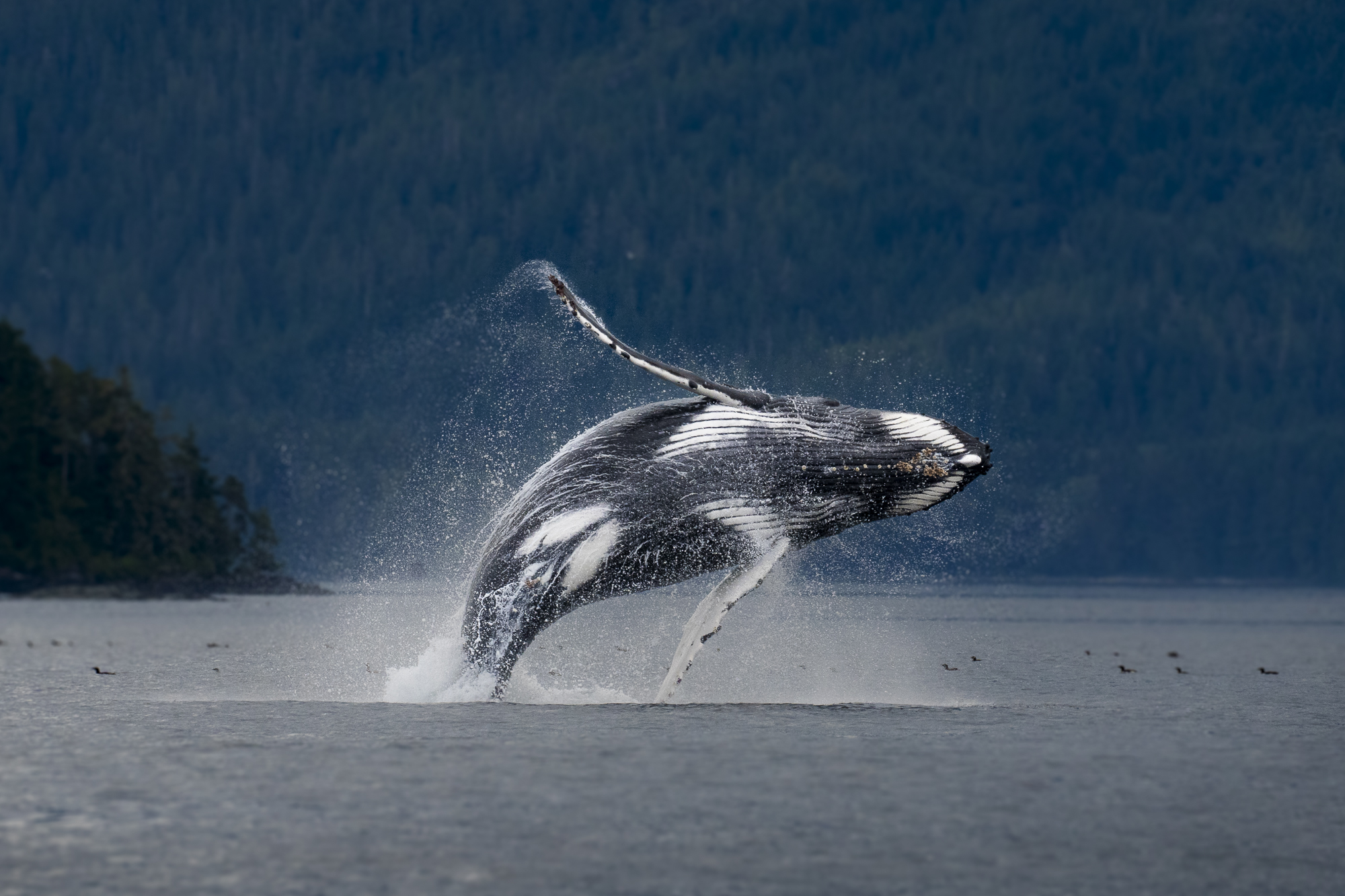While one travels to the Great Bear Rainforest with the hopes of seeing our large, burly land mammal headliner – the grizzly or black bear itself – a smaller, more wily mammal is starting to pique many guests’, and crew’s, interest – the coastal wolf. Smart, fast, and shy, these notoriously elusive animals are creeping up the wildlife sighting bucket list as we cruise through the shorelines they call home, and in recent years, have been allowing us more and more glimpses of their historically mysterious packs.
The coastal wolf, or sea wolf, is a unique subspecies of the grey wolf, found only along the coastline of southern Alaska and British Columbia including the Great Bear Rainforest and islands and islets of the Salish Sea. Adapting to their coastal environment, sea wolves are very strong long-distance swimmers, allowing them to swim between land masses in search of food. By foraging along the shoreline for salmon, shellfish, or even a washed up seal carcass, marine resources make up about 75% of their diet. Smaller in size than their land-based cousins, and often sporting different coloured fur coat, the coastal wolves blend in so well with their environment it’s hard to know when the rainforest ends and they begin.
A Fleeting Glimpse’s Best Chance
Sea wolves are not easy to spot – they are very attuned to human presence as their main habitat is very remote from human populations. We typically find our best chance at spotting sea wolves will be in the early morning at low tide when they may come out from the forest to forage along the shoreline. We find the key to spotting sea wolves is patience and silence – wary of us humans, it may take some time of silently floating in the zodiac offshore until the wolves, who may be watching us, feel comfortable enough to come out from the safety of the forest. If we aren’t lucky enough to see a coastal wolf in the flesh, there are other ways we can experience them: finding palm-sized wolf tracks on a sandy shoreline, hearing the haunting call and response of a wolf pack howling through the misty trees, or finding a salmon with just the head missing – a classic sea wolf snack.
A Future to Protect
Though our sea wolf sightings have been on the rise in recent years, their future is far from secured. While logging, climate change, and trophy hunting are the big three that threaten coastal wolf longevity, we are seeing through partnerships between various non-profit organizations (like Raincoast Conservation) and Coastal First Nations, that there are many individuals and groups pushing back and advocating for the sea wolf population, and suggestions on new policy being taken to high level of government. Combining ancestral knowledge with data collection, there is hope that policy and protection continues to be put into place to preserve the home and habitat of these uniquely coastal creatures.
